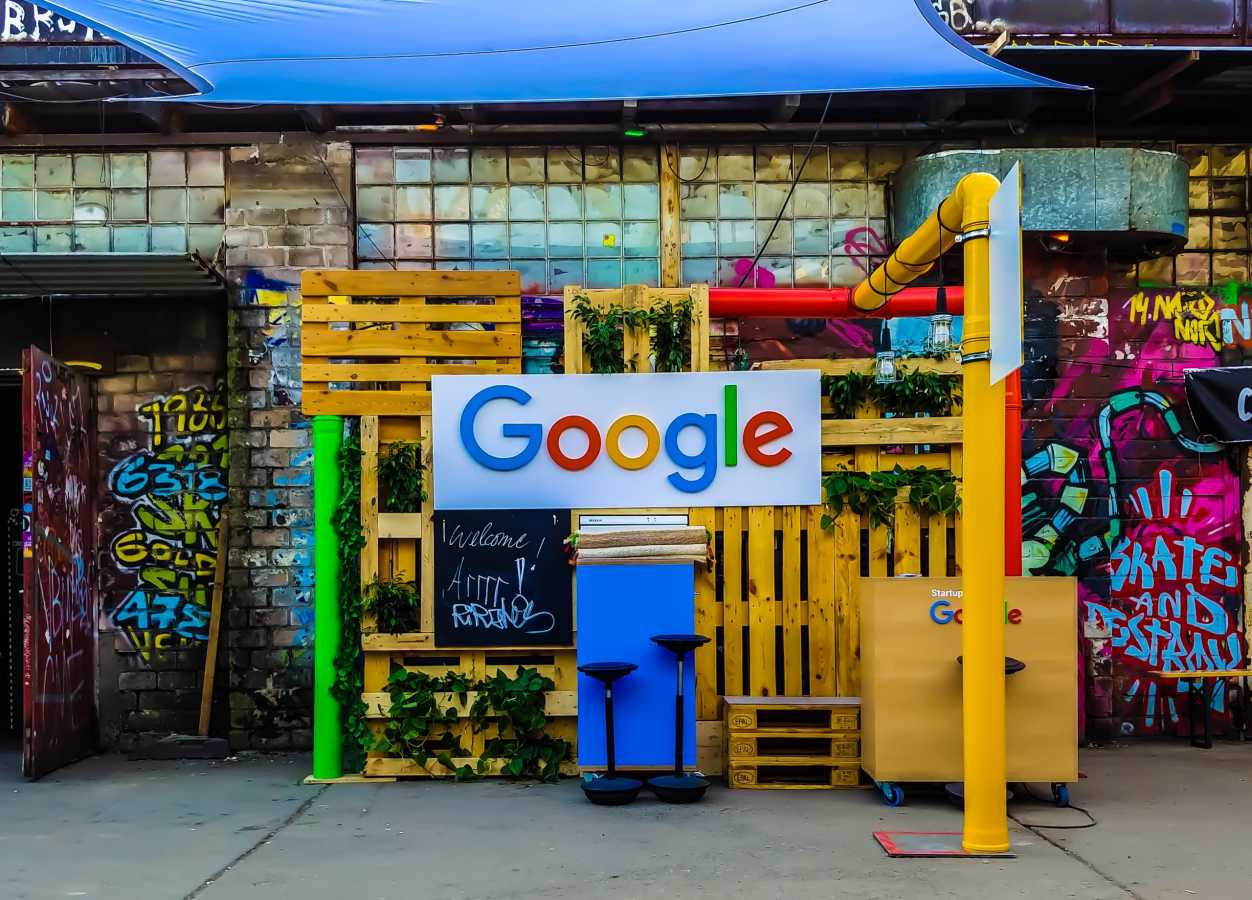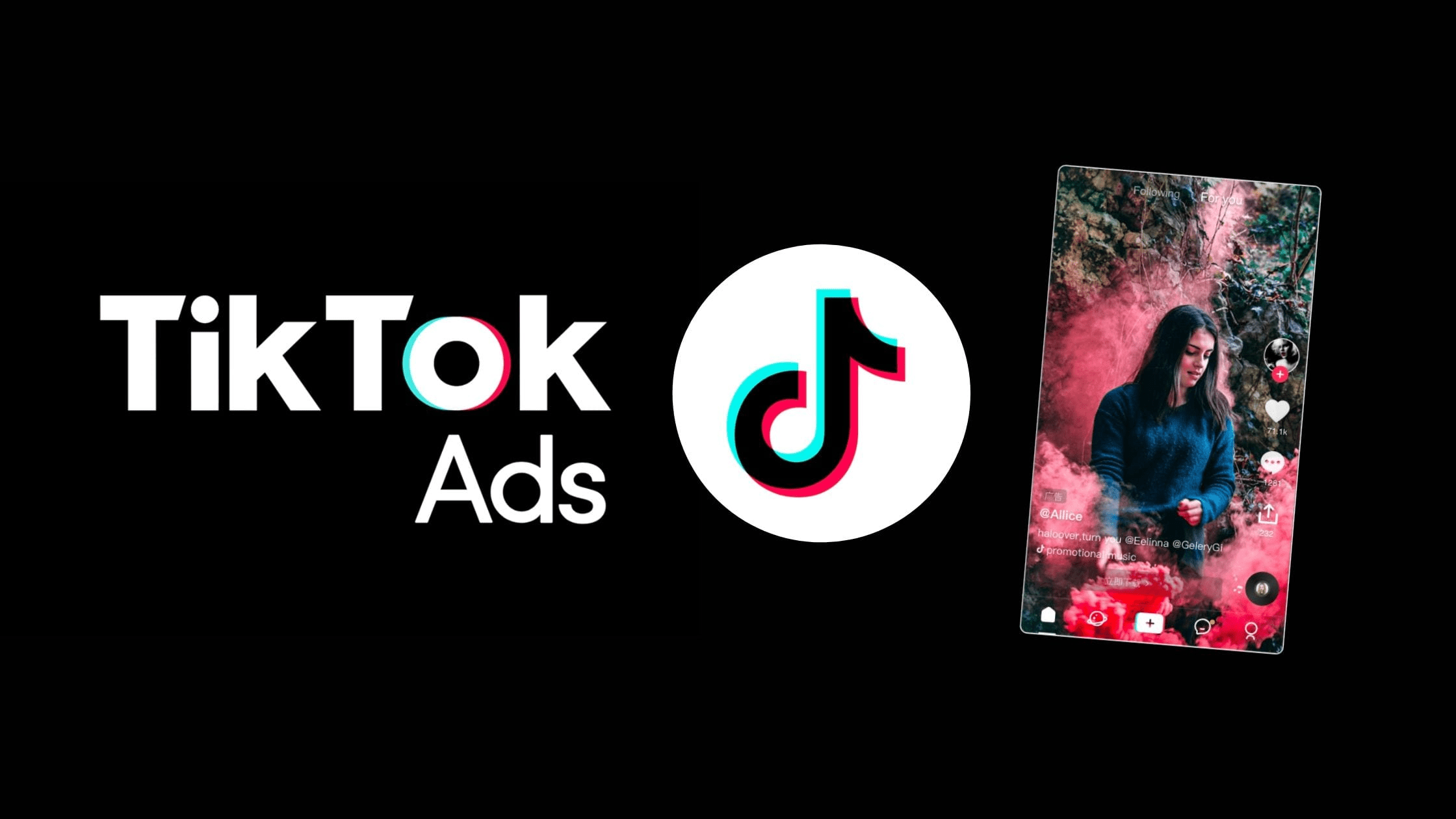Google in July 2020 released a report regarding consumer behavior. Alistair Rennie and Jonny Protheroe outline how decision-making has become “messier” in their words. This is due to eCommerce growing, and more consumers using computers and mobile devices to make purchases.
The internet has turned online shopping into a free-for-all frontier. Customers are more likely to visit several online stores and research various products before making a purchase. Due to a wider amount of choices, an individual is more likely to become indecisive and not know what to buy. Word-of-mouth or celebrity endorsements can radically change how a product is viewed. Even so, one endorsement is not a guarantee for a product to sell.
What Is The Messy Middle?
“The Messy Middle” refers to the average Internet consumer having a multitude of choices with products or services. These choices in theory are unlimited, with an “abundance of information” about the benefits and tradeoffs of each potential purchase. Customers as a result take more time to reach a decision and complicate marketing research for companies.
Marketing has adjusted for online shopping’s window of uncertainty, with alternating success and failure. As a result, firms have a harder time developing campaigns with traditional strategies. A consumer can conduct more research about a product and fact-check any embellishments.

Eight Things To Know About Advertising
1. Revelations In The Consumer Journey
The consumer journey has changed drastically since eCommerce made its mark on global markets. With the Internet, multiple stimuli influence behavior and decisions.
Before, customers would go to brick-and-mortar stores to make a purchase. Their choices were limited to the products available in a physical location, or options they could order through the store’s catalogs and inventories. Even though online purchases have been rising at a steady rate since eCommerce became mainstream — when Amazon entered the fray in 1995– the pandemic has motivated consumers to abandon physical locations for their safety. They find the items online that they would previously locate in a store, and make the appropriate orders.
Consider influencer culture; influencers are online celebrities that endorse products to their social media audiences. This is one such stimulus that can lead to more purchases. Influencer culture, however, works with display ads and graphic designs to sell a product. The process is never singular, or independent.
Marketers need to focus on the motivations behind consumer decisions. Motivations change based on extenuating circumstances or trends. The pandemic is one example of a drastic change in buying behavior.
2. Cheap Vs. Best
Consumers don’t necessarily want the cheapest options. They want to receive value from products and measure both physical cost and benefits. This can potentially undermine retailers lacking in specialty items.
Search terms can define what “best” entails for different users. The report notes that not all laptops are the same; consumers may want a laptop for business, leisure time, or professional gaming. They may search for features such as “longer battery life,” “extra RAM,” or “heavy-duty for travel.”
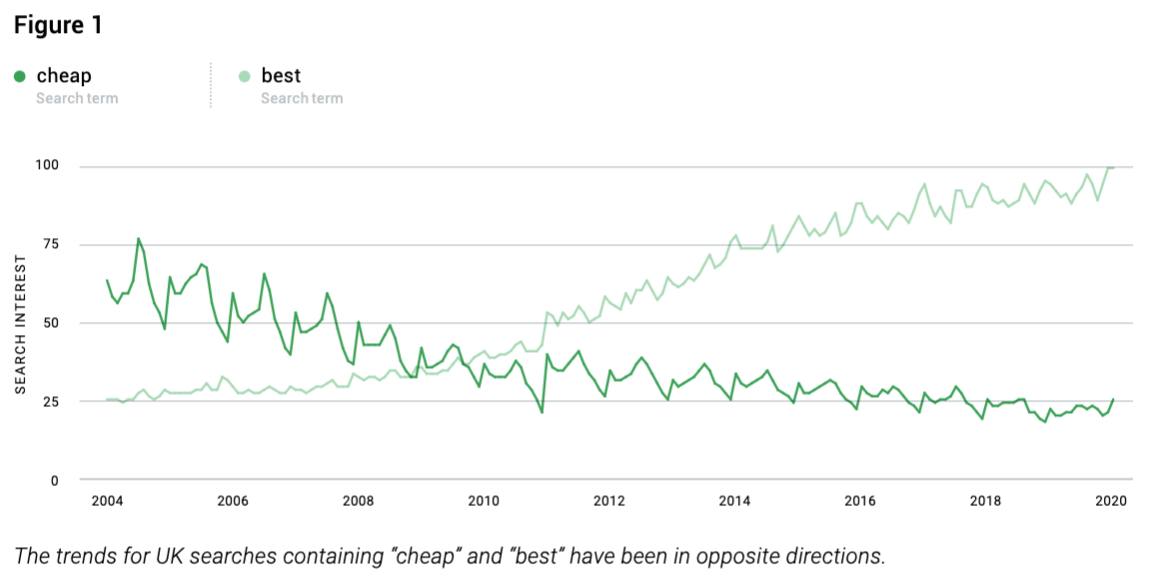
Research from 2009 showed that people buying products would rather find the best quality. Word-of-mouth and product reviews can make all the difference; eCommerce websites ideally have a space for this positivity, so as to convince consumers they are an authority and deserve trust.
3. Changing Marketing Models
The first marketing model appeared in 1898, which simply focused on the journey when a customer sees a particular brand. Elmo Lewis designed a linear hierarchy to show the journey. Later models would input funnels — segmenting consumers according to their place in the purchasing process–
McKinsey and ZMOT add in a new factor — “active evaluation” and the “zero moment of truth”. The former has consumers researching the products in question, while the latter has a consumer hearing about the item or service in question. Participation has become a higher deciding factor.
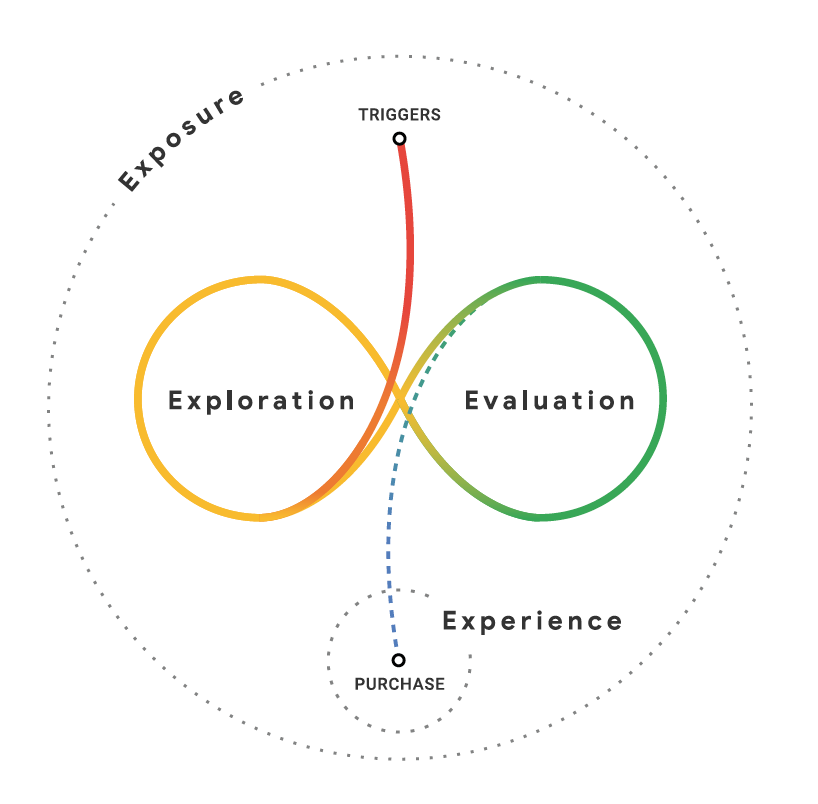 4. Branding Versus Direct Response
4. Branding Versus Direct Response
Branding and direct response have been polarized as marketing strategies. The direct response focuses on the short-term and making sure you close that sale. In contrast, branding wants to build a value proposition within the consumer’s mindset, so they want and need your product.
Time to purchase can determine which strategy is more viable. A marketer will determine if he or she has months to build a loyal customer base, or if they want to close the sale sooner. Car dealerships are one such example of the latter, where salespeople will encourage people to buy their vehicle of choice, sooner preferably. Strategies include inflating prices and bringing them down as if providing a discount.
In contrast, branding convinces the consumer that they should not only buy the product but also believe in its maker. Instead of a sale, the marketer expects a convert who will make a purchase. Targeted advertising, word-of-mouth, and reviews can lend to this.
Marketers should use a combination of branding and direct response to reach both consumers. Implement both search and display ads for either a business or a client, and optimize communicating a simple yet memorable message to a target audience.
5. Consumer Biases
Category Heuristics
These are shortcuts or rules-of-thumb that consumers use to shorten the decision-making process. Marketers can leverage this by reducing the number of choices available, simplifying information, and increasing accessibility.
The category page is one place to reduce choices. With clients, our standard strategy for category pages is to mark three products that stand out, as well as their benefits. A visitor can click on these products and add them to their cart quickly.
Authority Bias
Consumers will alter their attitude towards a product or service based on an authority figure’s word. An authority figure can be a celebrity, an expert in the field, or a trusted individual. For example, a stockbroker’s advice on investing carries more weight than an average bank teller.
One of our clients designs, engineers and retails industrial scales. We aimed to build them as an authority figure on industrial weighing. To this end, the company owner creates articles based on relevant topics. The website now ranks on page one on Google for industrial weighing terms.
Social Proof
People will copy others’ behavior during uncertain times or when they are indecisive. For this reason, word-of-mouth and product reviews are crucial.
Power Of Now
People want products and services now and are less likely to wait for a future investment or order. Amazon weaponizes this with Prime two-day shipping, making it a necessity for other consumers.
Scarcity Bias
When time, access, and quantities of a product are limited, consumers are more likely to see the product or service as desirable. Deadlines motivate people to buy, while smaller stocks motivate people to buy. Consumers saw the latter happen this year with paper products.
Power Of Free
Despite the saying “there is no such thing as a free lunch,” consumers like free products or services. They only have to give their time in exchange. People value the price of zero or having to pay nothing. If a $20 gift card costs $7 and a $10 gift card costs nothing, people will choose the latter.
6. First Versus Second-Choice Brands
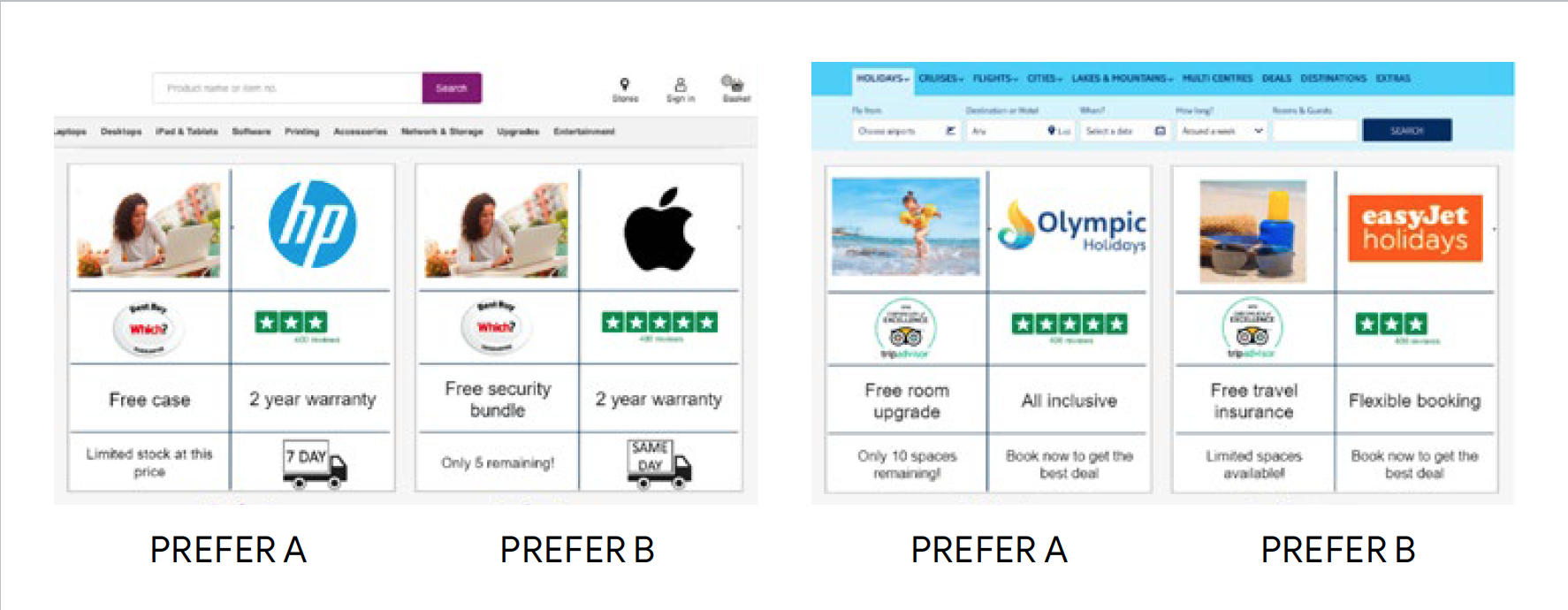
Consumers are biased towards favorite brands. First-choice options, especially in luxury items, are familiar and have high-value propositions.
If a second-choice brand simply appears, a small portion of consumers — thirty percent according to Google — gravitate towards it. “The power of showing up” can explain this phenomenon, as mentioned. In industries where the purchasing process is tedious and complicated, such as car insurance, consumers may prefer a brand where they can engage less.
A second-choice option in theory provides the same baseline benefits as a first-choice brand. They also show up during the decision-making process, to cause mild disruption. Marketers simply need to determine the right moment.
7. Challenger Brands And Disruption
Any brand with the right messaging and value proposition can cause an upset. The product or service must appeal to consumers and either simplify their life or provide a unique benefit. Timing can make all the difference.
In particular, challenger brands can appear and grab the market share in their industry of choice. They did so by studying consumer behavior and applying the data to appear at the right time and deliver value to consumers.
8. Overdog Effect
Everyone likes an underdog in fiction, especially when seeing a person overcome the odds. The same doesn’t necessarily apply to advertising. Consumers remain loyal to their brands, especially if making purchases for months or years on end.
The “underdog” brands that succeed have consistent messaging and a compelling story. They often have a familiar, friendly face, and tales about the odds that the business has to face. For this reason, only smaller businesses such as LLCs and partnerships can use this strategy; a corporation has a harder time convincing consumers that it is an underdog.
How Brands Should Adjust
 Companies should treat a brand as a lifetime investment rather than as an asset. Leverage behavioral biases that can connect with an audience, so as to establish a presence in a competitive field.
Companies should treat a brand as a lifetime investment rather than as an asset. Leverage behavioral biases that can connect with an audience, so as to establish a presence in a competitive field.
First, engage in strategies that make brands a constant presence for consumers. Advertising online is one way to provide this awareness; various media such as video, banners, and sponsored content can not only remind consumers that a brand exists but also that it can provide value.
Give users the ability to explore brand knowledge, while limiting choices. Rather than overwhelm a consumer with an abundance of information, tailor and target the facts towards a specific audience. Keep the information relevant to consumers, so they can make an informed decision and trust the brand as an authority figure in the field.
In tandem, brands should optimize the user experience for consumers willing to learn and make a purchase. Simplify complex processes, and provide conveniences in a shopping cart and at checkout.
Second, conduct constant research and data science on consumers. New facts and knowledge can change behavior online. Implement relevant data into algorithms to identify consumers, their behavior, and a type of market.
Curate advertising based on available data that also benefits from behavioral biases. Create a code of ethics by which to implement data. Experts note a difference between manipulating and persuading consumers; the former is often called “sludge”. Consumers learn fast from techniques that affect behavior and will react defensively to it.
Before, advertisers had to simply worry about implementing honesty into campaigns. On the Internet, different marketing strategies can change customers’ mindsets and thinking patterns, and irresponsible campaigns will lead to correlative behavior.
Fourth, reduce the cognitive burden on the consumer when making a purchase. If a consumer is exploring an eCommerce website, the platform should not only optimize the user experience with convenient navigation and SEO but also provide the easiest decision-making process.
Fact-check and present information completely, so as to keep messaging consistent. Reduce pop-ups if not removing them completely, and implement multiple payment options. PayPal and credit cards are not the only options; smartphones can now pay.
But perhaps the most essential is the nurture aspect of the “sales funnel” or the “checkout funnel”. This report by Google is proof that NURTURE is a huge part of consumer behavior, especially in the digital age.
More about “eCommerce Nurture Funnels” here.
If you feel like your organization could do better with Nurture Funnels, contact us and we will be happy to build a custom strategy for you.
